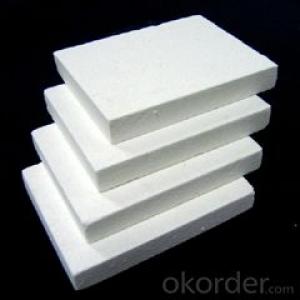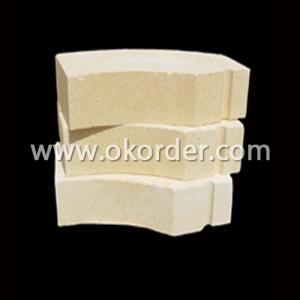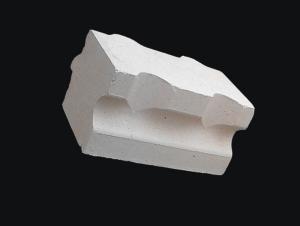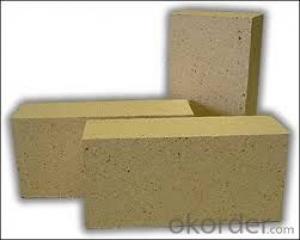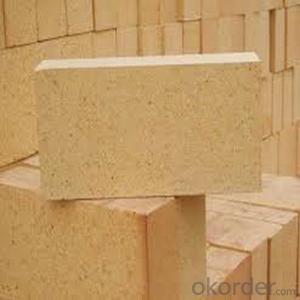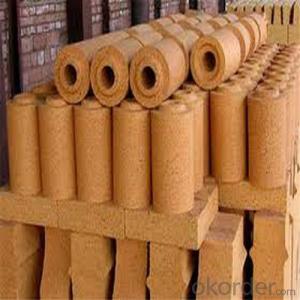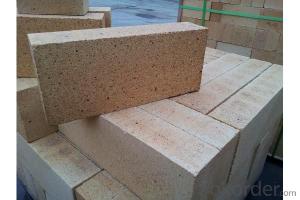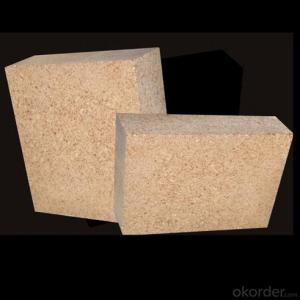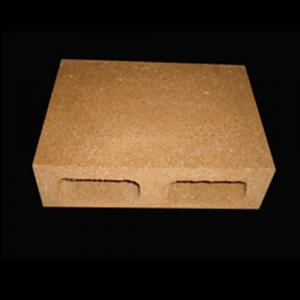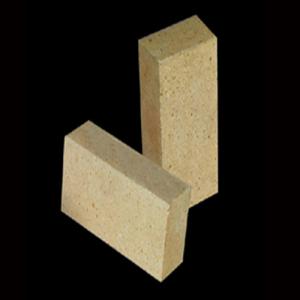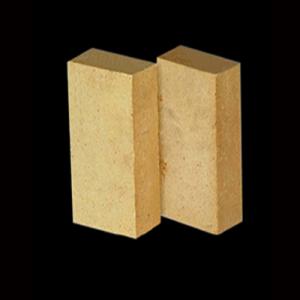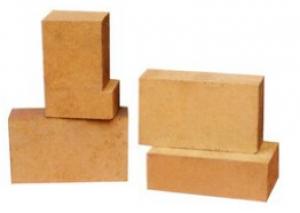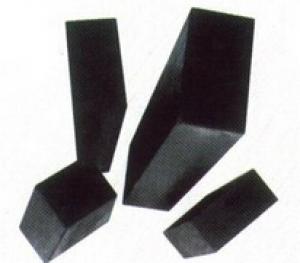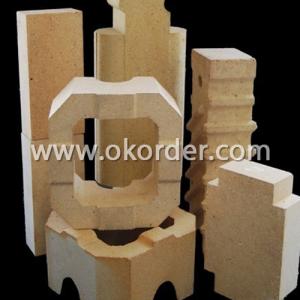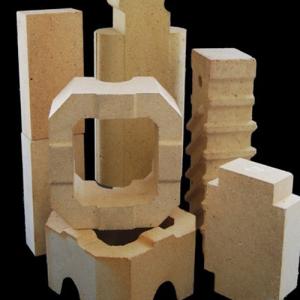Fireclay Brick Light Weight Insulating Fire Brick
- Loading Port:
- Tianjin
- Payment Terms:
- TT OR LC
- Min Order Qty:
- 1 m.t.
- Supply Capability:
- 2000 m.t./month
OKorder Service Pledge
OKorder Financial Service
You Might Also Like
Description of Fireclay Brick
Fireclay Brick Light Weight Insulating Fire Brick are specializing in refractory materials for various industries such as: Iron and steel, Cement, Chemicals, Copper, Glass and Foundries etc. and we are in a position to supply these products: high alumina brick, clay brick, Silicon Brick, magnesia-carbon brick, Acid resistance brick and insulating brick etc
Specifications for Fireclay Brick
Item | Fireclay Brick | Fireclay Brick Light Weight Insulating Fire Brick | ||||
SK32 | SK34 | SK35 | SK36 | SK37 | SK38 | |
Al2O3 (%) ≥ | 35 | 42 | 48 | 55 | 65 | 75 |
Refractoriness (oC) ≥ | 1670 | 1730 | 1750 | 1770 | 1790 | 1790 |
Refractoriness under Load, oC,0.2MPa ≥ | 1250 | 1300 | 1420 | 1470 | 1500 | 1520 |
Linear Change(%),oC×2h | 1350 | 1350 | 1450 | 1500 | 1500 | 1500 |
-0.5~0 | -0.5~0 | -0.4~+0.1 | -0.4~+0.1 | -0.4~+0.1 | -0.4~+0.1 | |
Porosity (%)≤ | 24 | 22 | 20 | 20 | 19 | 19 |
Cold Crushing Strength, MPa≥ | 20 | 30 | 39.2 | 44.1 | 49 | 53.9
|
Features of Fireclay Brick
Good thermal shock resistance
High-temperature endurable
Good thermal insulation
the using tempreture is 1400 C
Typical Application of Fireclay Brick
Furnaces of metallurgy industry, heat treatment furnace.
Furnaces of chemical industry and construction industry.
Furnace of incineration of garbage, recirculating fluidized bed furnace .
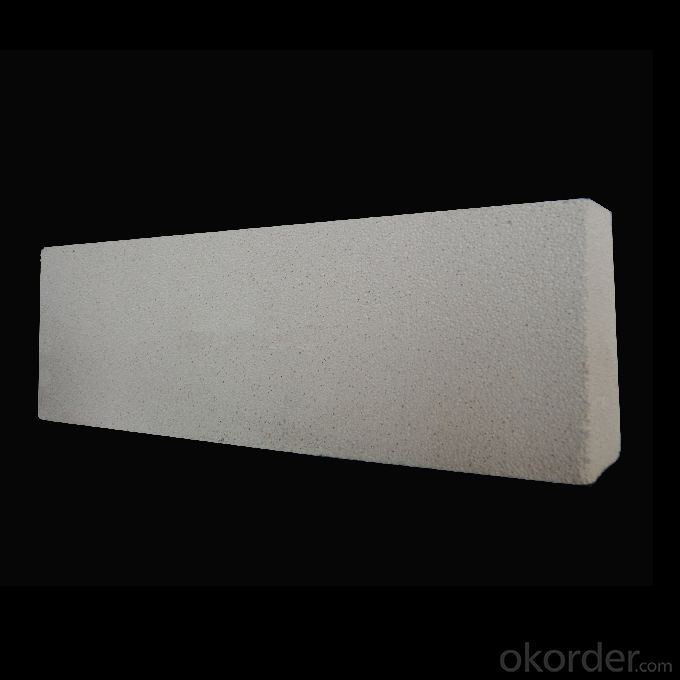
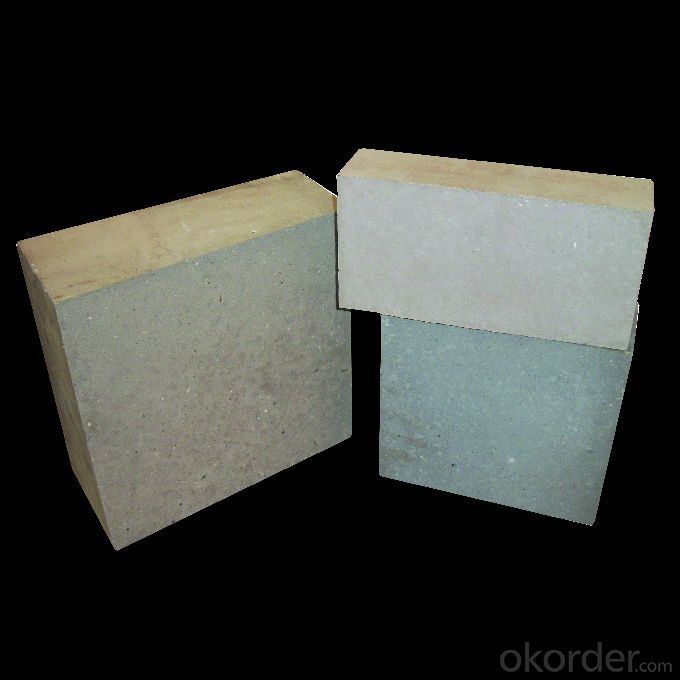

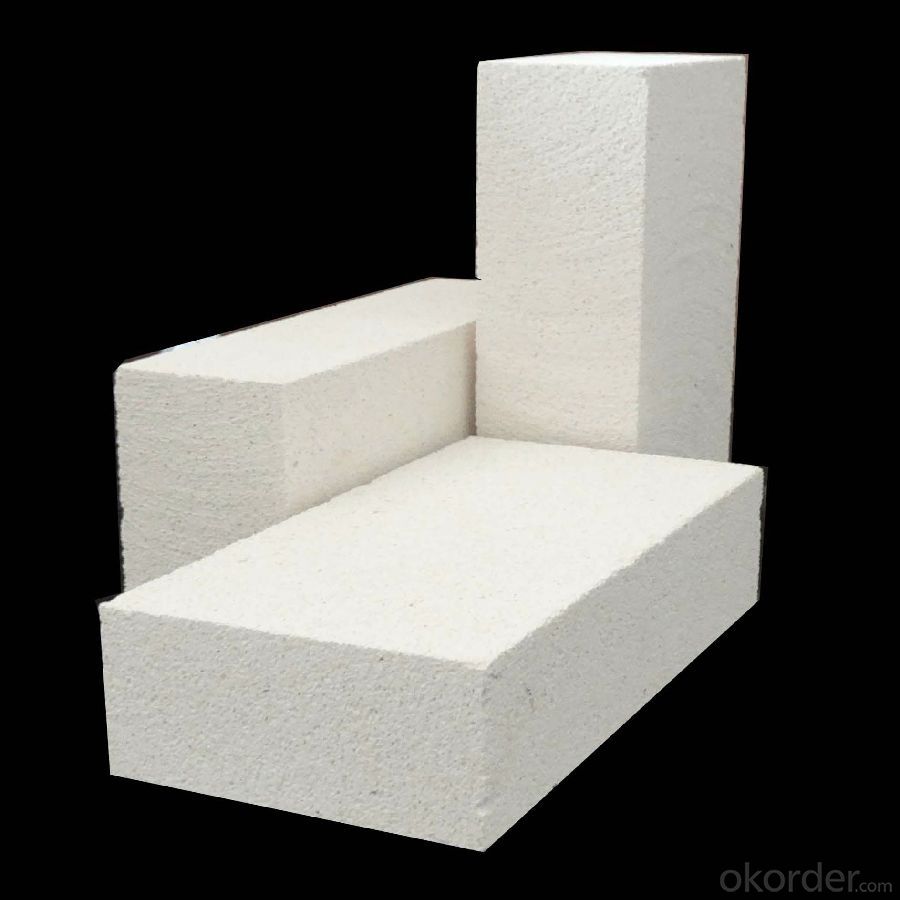
- Q:How to test the aluminium bricks of high alumina refractory bricks?
- Before making bricks, the raw materials are usually tested and tested to see if the aluminum content is up to standard
- Q:Corundum, high alumina and fireclay refractory difference is what
- In fact, they are not consistent with raw materials, corundum refractories can use white corundum, white corundum, brown corundum corundum material, alumina content of these materials is higher than 90%, while the high aluminum refractory material is bauxite, alumina in 90 to less than 70, and clay raw materials the aluminum content is less than 70..
- Q:What are the specifications for bricks?
- Thecompressive node as a new type of building energy-saving wall materials, which can be used for masonry walls, but also has good thermal properties, in line with the construction of the building module, reduce the loss in the process of construction, improve work efficiency; the hole rate reached more than 35%, can reduce the weight of the wall, save the foundation engineering cost. Compared with common sintered porous brick, it has the characteristics of heat preservation, heat insulation, light weight, high strength and high construction efficiency. The product is made of shale as raw material. It is produced by high vacuum extrusion molding machine and one yard firing process
- Q:What materials are used for roof insulation?
- The other one is inorganic insulation materials, such as Portland, rare earth insulation, the thickness should be 5 cm or more, up to the high cost of auxiliary materials of construction, to reinforce, new inorganic insulation material, the material thickness, on the line of 2-3 cm, direct smear on the top of the house, without auxiliary material, than the price of wool, high aluminum silicate cotton.
- Q:What is the difference between high alumina brick and clay brick?
- Lightweight high alumina bricks are usually made of high alumina bauxite clinker with a small amount of clay. After grinding, the bricks are poured and shaped in the form of slurry by gas or foam method. They are fired at 1300~1500 DEG C. Sometimes industrial alumina can be used instead of some bauxite clinker. Used for lining and insulation of masonry kilns, as well as for areas where there is no strong, high temperature molten material erosion and erosion. When contacting the flame directly, the surface contact temperature shall not be higher than 1350 degrees centigrade.
- Q:What is fireproof concrete?
- A series of concrete with fire resistance and heat resistance is made of Portland cement series as cementing material and heat-resistant material as aggregate. Silicate fireproof heat-resistant concrete with Portland slag cement, Portland cement and water glass as cementing material, broken clay brick, clay, cement clinker, broken high alumina brick as aggregate.
- Q:How to reduce the harm caused by two times mullite in high alumina refractory material
- Two times mullite refers to the content of aluminum is about 70%, in high temperature sintering, the expansion coefficient is large, the thermal expansion rate is high.
- Q:What's the difference between high alumina refractory bricks and high alumina refractory bricks?
- High alumina refractory brick in all thermal shock properties except performance are better than clay refractory brick, masonry in furnace and thermal equipment, such as clay bricks can be competent the work environment is not high aluminum brick masonry.
- Q:What is the standard size of high alumina brick?
- Standard brick: 230 x 115 x 65; four points: 230 x 115 x 40; three points: 230 x 115 x 30; 150 x 120: Brick gable. Light weight brick 1 to 1.7 kilograms; heavy clay superscript brick weighs 3.75 kilograms; light 30 plates 0.79 kilograms; light 40 plates, 1.05 kilograms.
- Q:What is the apparent porosity of high alumina brick?
- Total porosity is porosity refers to the total volume of sample porosity in the percentage of total volume of samples. Apparent porosity refers to the percentage of the total volume of openings, pores, and total specimens in the sample.
1. Manufacturer Overview |
|
|---|---|
| Location | |
| Year Established | |
| Annual Output Value | |
| Main Markets | |
| Company Certifications | |
2. Manufacturer Certificates |
|
|---|---|
| a) Certification Name | |
| Range | |
| Reference | |
| Validity Period | |
3. Manufacturer Capability |
|
|---|---|
| a)Trade Capacity | |
| Nearest Port | |
| Export Percentage | |
| No.of Employees in Trade Department | |
| Language Spoken: | |
| b)Factory Information | |
| Factory Size: | |
| No. of Production Lines | |
| Contract Manufacturing | |
| Product Price Range | |
Send your message to us
Fireclay Brick Light Weight Insulating Fire Brick
- Loading Port:
- Tianjin
- Payment Terms:
- TT OR LC
- Min Order Qty:
- 1 m.t.
- Supply Capability:
- 2000 m.t./month
OKorder Service Pledge
OKorder Financial Service
Similar products
New products
Hot products
Related keywords
